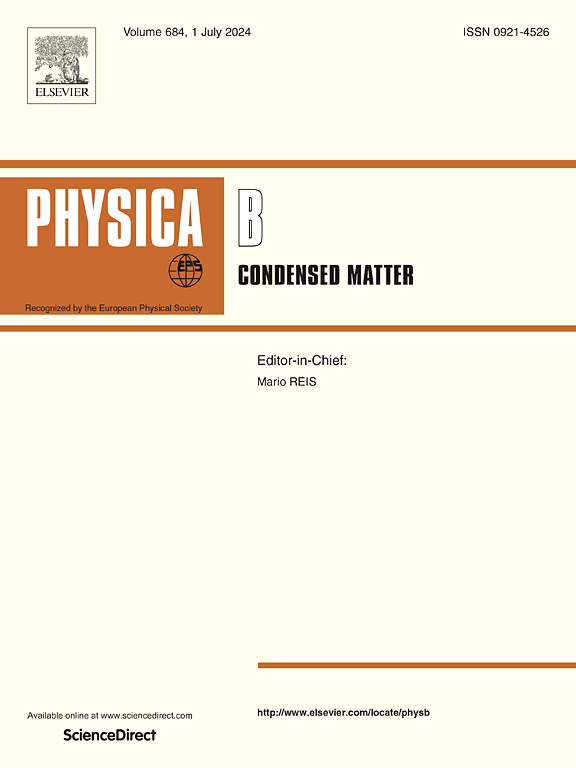A comprehensive first-principles investigation of the structure, electronic, magnetic and optical properties of orthorhombic CrO2 at 14 GPa
IF 2.8
3区 物理与天体物理
Q2 PHYSICS, CONDENSED MATTER
引用次数: 0
Abstract
The structure, electronic, magnetic and optical properties of orthorhombic CrO2 (o-CrO2) at 14 GPa are extensively investigated from the first-principles calculations. It is revealed that the Cr-O distances and <O-Cr-O angles in o-CrO2 decrease compared to rutile CrO2 (r-CrO2), resulting in structural distortion in the CrO6 octahedra. The system is half-metallic in both GGA and GGA + U (U is the Coulomb interaction) calculations with metallic/insulating up/down spin channel. The partial filling and delocalization of electrons in the Cr-3dx2- y2 and O-2px/y state near the Fermi level results in the metallic behaviour of o-CrO2 for the up spin channel. The ground state energy calculations confirm that ferromagnetism is stabilized in o-CrO2, with the strength of ferromagnetism enhanced upon the application of U = 3 eV. The cooperative effect of p-d hybridization and Cr-O antiferromagnetic coupling results in the ferromagnetism in o-CrO2. The Curie temperature (Tc) of o-CrO2 reduces by 166 K compared to r-CrO2 and Tc reaches towards the room temperature for U = 3 eV. Several peaks are observed both for the real [] and imaginary [] parts of the dielectric function, resulting in anisotropy in the structure. The anisotropy in the structure reduces upon the application of U = 3 eV. The net electron loss function is augmented upon the application of U, resulting in the reduction of conductivity of o-CrO2. More interestingly, the plasmon frequencies corresponding to the x, y and z components of L() decrease upon the application of U.
求助全文
约1分钟内获得全文
求助全文
来源期刊

Physica B-condensed Matter
物理-物理:凝聚态物理
CiteScore
4.90
自引率
7.10%
发文量
703
审稿时长
44 days
期刊介绍:
Physica B: Condensed Matter comprises all condensed matter and material physics that involve theoretical, computational and experimental work.
Papers should contain further developments and a proper discussion on the physics of experimental or theoretical results in one of the following areas:
-Magnetism
-Materials physics
-Nanostructures and nanomaterials
-Optics and optical materials
-Quantum materials
-Semiconductors
-Strongly correlated systems
-Superconductivity
-Surfaces and interfaces
 求助内容:
求助内容: 应助结果提醒方式:
应助结果提醒方式:


